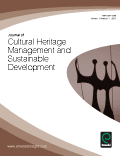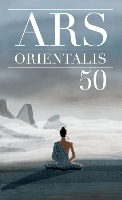
Digital Humanities Quarterly
Scope & Guideline
Empowering voices in the realm of digital scholarship.
Introduction
Aims and Scopes
- Interdisciplinary Research:
Fostering collaboration across various fields such as history, literature, art, and computer science, DHQ promotes research that utilizes digital tools to reinterpret traditional humanities scholarship. - Computational Methods:
The journal emphasizes the application of computational techniques, including machine learning, data visualization, and digital mapping, to analyze and present humanities data in new and insightful ways. - Cultural Preservation and Access:
A core aim of DHQ is to enhance access to cultural heritage through digital archives and resources, ensuring that historical materials are preserved and made available to a broader audience. - Critical Engagement with Technology:
DHQ encourages a critical examination of the implications of digital tools and methodologies in the humanities, fostering discussions on ethics, accessibility, and the impact of technology on scholarly practices. - Innovative Pedagogies:
The journal explores new educational methodologies in the digital humanities, promoting the integration of digital tools into humanities curricula and fostering skills development among students and scholars.
Trending and Emerging
- Artificial Intelligence and Machine Learning:
There has been a marked increase in papers discussing the application of AI and machine learning in the analysis of historical texts and visual data, addressing ethical considerations and enhancing research capabilities. - Digital Archives and Accessibility:
Emerging themes focus on improving access to digital archives, utilizing technologies such as crowdsourcing and collaborative frameworks to engage diverse communities in the preservation and interpretation of cultural heritage. - Environmental Humanities:
A growing number of publications are examining the intersection of digital humanities and environmental studies, reflecting a heightened awareness of ecological issues and the role of digital tools in analyzing environmental data. - Data Feminism and Social Justice:
Recent trends show an increased focus on data feminism and the role of digital humanities in promoting social justice, particularly in relation to marginalized voices and communities, indicating a shift towards more inclusive research methodologies. - Visualization Techniques:
The use of advanced data visualization techniques has become more prominent, with researchers increasingly exploring how visual representations can enhance understanding and interpretation of complex datasets in the humanities.
Declining or Waning
- Traditional Textual Analysis:
While textual analysis remains relevant, there has been a noticeable shift away from purely traditional methods towards more computational approaches, such as machine learning and data mining, which offer deeper insights into large datasets. - Narrowly Defined Historical Studies:
Papers centered on very specific historical events or figures without the integration of digital methodologies have become less frequent, as the field leans towards broader, more interdisciplinary inquiries that encompass various perspectives. - Static Archives:
The focus on static digital archives has waned in favor of dynamic, interactive platforms that allow for ongoing engagement and collaboration, reflecting a broader trend towards participatory and community-driven projects.
Similar Journals

Antares-Letras e Humanidades
Exploring the Depths of Literature and CultureAntares-Letras e Humanidades is a prominent academic journal published by the Graduate Program in Literature, Culture & Regions at the Universidade de Caxias do Sul, Brazil. As a dynamic platform for scholarly dialogue in the humanities, this journal serves as a vital conduit for research focused on literature and cultural studies, aiming to foster a deeper understanding of these intricate fields. With its ISSN 1984-4921, Antares-Letras e Humanidades welcomes multidisciplinary approaches and encourages submissions that explore the nuances of literary expression, cultural contexts, and regional significance. While it currently operates under a non-open access model, the journal remains committed to enhancing its visibility and reach within the global academic community. As an emerging publication, it holds great potential for contributing significantly to ongoing discussions and advancements in humanities research, making it an essential resource for scholars, students, and professionals eager to engage with contemporary issues in literature and culture.

Archeomatica-Tecnologie per i Beni Culturali
Empowering Cultural Heritage through Technology.Archeomatica-Tecnologie per i Beni Culturali is a prestigious open-access journal dedicated to the field of cultural heritage technologies. Published by ARCHEOMATICA, this journal prides itself on disseminating high-quality research focused on innovative methodologies and technologies that enhance the preservation, conservation, and management of cultural assets. Since its inception in 2011, Archeomatica has fostered an inclusive platform for researchers, professionals, and students to share insights and advancements in the integration of science and technology within the cultural heritage sector. With a commitment to accessibility, all articles are freely available, promoting a collaborative academic environment. This journal is essential for those interested in bridging the gap between cultural heritage preservation and technological innovation, helping to ensure the longevity of our shared history.

Transinformacao
Exploring the intersections of knowledge and practice across diverse fields.Transinformacao is a distinguished academic journal published by Pontificia Universidade Catolica Campinas in Brazil, focusing on the interdisciplinary fields of Communication, Information Systems, Library and Information Sciences, and Museology. With a commitment to advancing knowledge and fostering scholarly dialogue, the journal spans coverage from 2010 to 2023 and has been categorized in various quartiles, reflecting its growing influence; it holds a Q3 ranking in Communication and Library and Information Sciences, and a Q4 ranking in Information Systems. This positioning demonstrates the journal's relevance within the academic community, appealing to researchers, professionals, and students invested in these dynamic fields. Although it does not currently offer open access publishing, Transinformacao provides critical insights and findings valuable for those pursuing innovative research, striving to enhance practices and understanding within their disciplines. Located in Campinas, SP, the journal continually seeks to engage with emerging trends and robust methodologies, contributing meaningfully to academic discourse.

Fluminensia
Cultivating Critical Discourse in the HumanitiesFluminensia, published by the University of Rijeka, Faculty of Philosophy, is a distinguished open-access journal that has been contributing to the fields of Linguistics and Literature since its inception in 1999. With an ISSN of 0353-4642 and an E-ISSN of 1848-9680, this journal offers rigorous peer-reviewed articles, fostering an engaging platform for researchers, professionals, and students alike. Recognized internationally, it holds a Q3 ranking in Linguistics and Language and a Q2 ranking in Literature and Literary Theory for 2023, reflecting its significant impact within these fields. Based in Croatia and serving a global academic community, Fluminensia aims to explore innovative theories and methodologies, promoting critical discourse and scholarly exchange. Researchers will find its broad scope inviting, bridging insights across various disciplines in the arts and humanities. Accessible to all, this journal continues to foster an inclusive academic landscape, ensuring that valuable research is widely disseminated and freely available.

Open Library of Humanities
Empowering Voices in Anthropology, Arts, and CultureThe Open Library of Humanities, a premier platform established in 2015 and based in the United Kingdom, elevates the discourse in the fields of Anthropology, Arts and Humanities, Cultural Studies, and Sociology and Political Science. Published by OPEN LIBRARY OF HUMANITIES, this open access journal provides a prominently accessible space for scholars and researchers to disseminate their findings and contribute to a diverse range of academic conversations. With an impressive Scopus ranking that reflects its influence—ranking in the 87th percentile in General Arts and Humanities and in the 80th percentile for Cultural Studies—the journal is recognized for publishing high-quality research that addresses significant and contemporary issues within its scope. By embracing a multidisciplinary approach, the Open Library of Humanities fosters interdisciplinary dialogue and encourages innovative research dissemination practices. Scholars, students, and practitioners are invited to engage with the latest developments and theoretical insights that enrich our understanding of the human experience.

Khazar Journal of Humanities and Social Sciences
Engaging Contemporary Issues through Rigorous ScholarshipKhazar Journal of Humanities and Social Sciences, published by KHAZAR UNIVERSITY, serves as a significant platform for the dissemination of scholarly research across various disciplines within the humanities and social sciences. With an ISSN of 2223-2613 and an E-ISSN of 2223-2621, the journal aims to foster intellectual dialogue and innovation by providing open access to high-quality articles that engage contemporary issues and theory in the field. Although HIndex and Scopus rankings are not currently available, the journal is recognized for its commitment to rigorous peer review and academic excellence. Based in Baku, Azerbaijan, the Khazar Journal invites contributions from researchers, professionals, and students eager to explore and contribute to the vibrant discourse within these critical areas of study. In an era where interdisciplinary approaches are becoming increasingly essential, the journal provides a vital resource for those looking to expand their knowledge and challenge traditional boundaries.

LaborHistorico
Unraveling the Complex Tapestry of Labor HistoryLaborHistorico is a distinguished academic journal published by the Universidade Federal do Rio de Janeiro, Faculdade de Letras, dedicated to the field of labor studies and historical research. Focusing on the dynamics of labor relations and their historical contexts, this journal aims to provide a platform for rigorous scholarship and innovative perspectives on the evolving nature of work. While it does not currently adopt an Open Access model, it remains committed to making relevant research accessible to its audience, which includes researchers, professionals, and students in the humanities and social sciences. With a dedication to fostering interdisciplinary dialogue, LaborHistorico offers its contributors and readers a vehicle for critical discussions and insights into labor history, making it an essential resource for anyone interested in understanding the complexities of labor through time.

Journal of Cultural Heritage Management and Sustainable Development
Cultivating knowledge at the crossroads of culture and development.Journal of Cultural Heritage Management and Sustainable Development is a pioneering publication dedicated to advancing the fields of cultural heritage management and sustainable practices. Published by Emerald Group Publishing Ltd in the United Kingdom, this journal has established itself as a critical resource since its inception in 2011, with an ongoing commitment to quality research through 2024. The journal is notably recognized with a Q1 ranking in Conservation and boasts impressive Scopus rankings, highlighting its significant impact in the realm of arts and humanities. It also showcases a multidisciplinary approach, bridging gaps between business management and urban studies, thereby providing invaluable insights to researchers, professionals, and students. With diverse access options to engage a broad audience, the Journal of Cultural Heritage Management and Sustainable Development thrives at the intersection of scholarship and practical application, making it an essential read for those dedicated to fostering sustainable development in cultural heritage contexts.

Studi irlandesi-A Journal of Irish Studies
Unveiling the Rich Tapestry of Irish StudiesStudi Irlandesi - A Journal of Irish Studies, published by FIRENZE UNIV PRESS, stands as a pivotal platform for the dissemination of scholarly research in the field of Irish Studies. With its Open Access model established since 2011, the journal facilitates the global exchange of knowledge and ideas, catering to researchers, professionals, and students with an interest in Ireland's rich cultural, historical, and literary heritage. The ISSN for the journal is 2239-3978, ensuring easy accessibility for those engaged in contemporary Irish studies. This journal not only aims to advance academic discourse but also serves as a crucial resource for interdisciplinary analysis surrounding Irish identity and its global impacts. As an essential publication within its field, Studi Irlandesi invites contributions that enhance understanding of Ireland’s complexities and its contributions to world culture.

ARS Orientalis
Advancing Understanding in Archaeology and Cultural StudiesARS Orientalis is a distinguished academic journal published by the Smithsonian Institution's Freer Gallery of Art, specializing in the fields of archaeology, cultural studies, and the visual and performing arts. With an ISSN of 0571-1371, this journal contributes significantly to scholarly discourse, having established a robust timeline of publication since its inception, notably from 2001 to 2006, 2010 to 2012, 2014 to 2017, and resuming again from 2022 to 2023. Though currently not open access, it maintains a respectable standing in the academic community with a categorization into Q3 quartiles across several disciplines, highlighting its relevance amid rigorous scholarly evaluation. The journal is particularly valuable for researchers, professionals, and students who seek to explore interdisciplinary connections within its scope. Situated in the United States, it aims to disseminate insightful research that bridges the gap between traditional scholarship and contemporary studies in visual culture and archaeological findings.